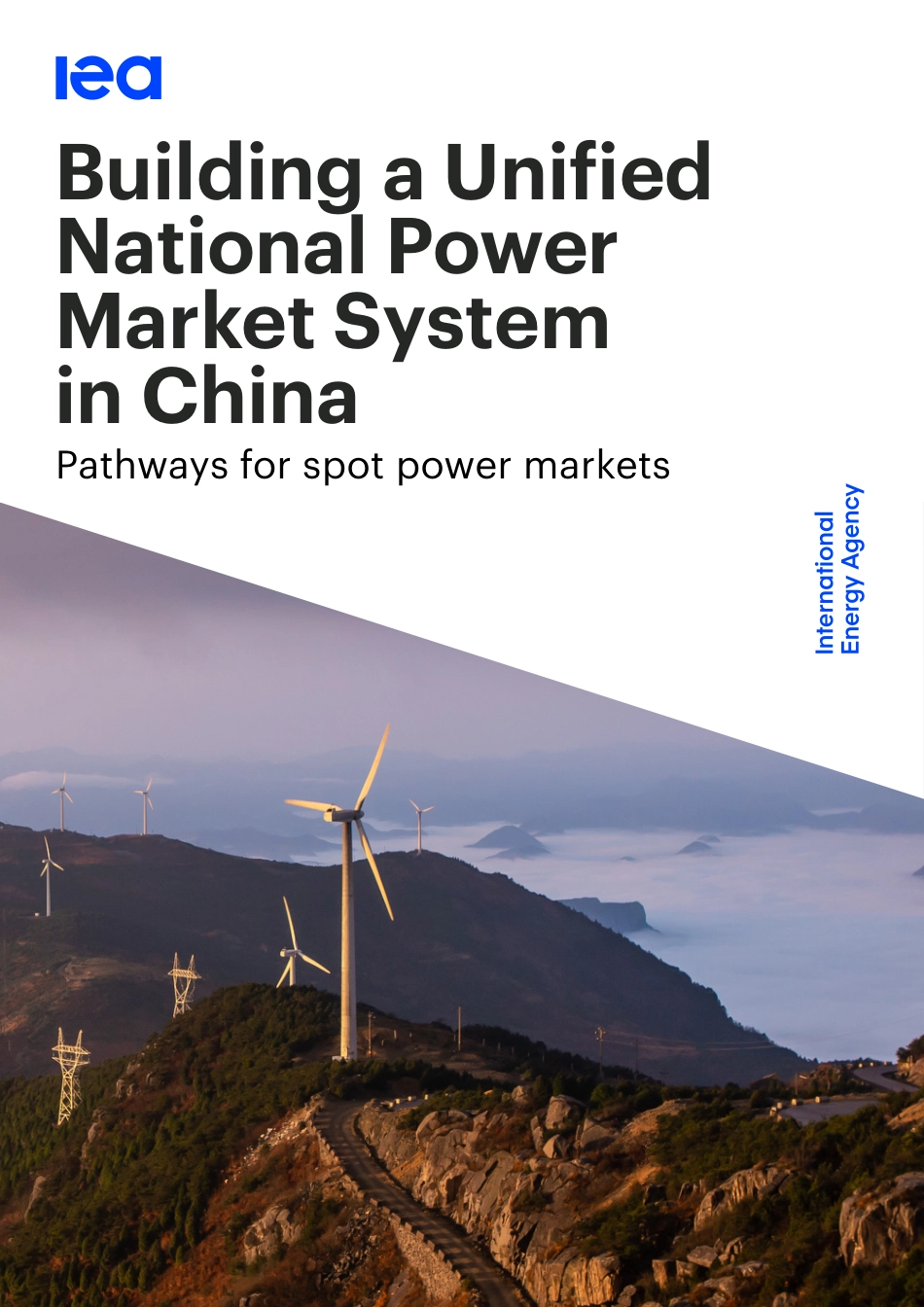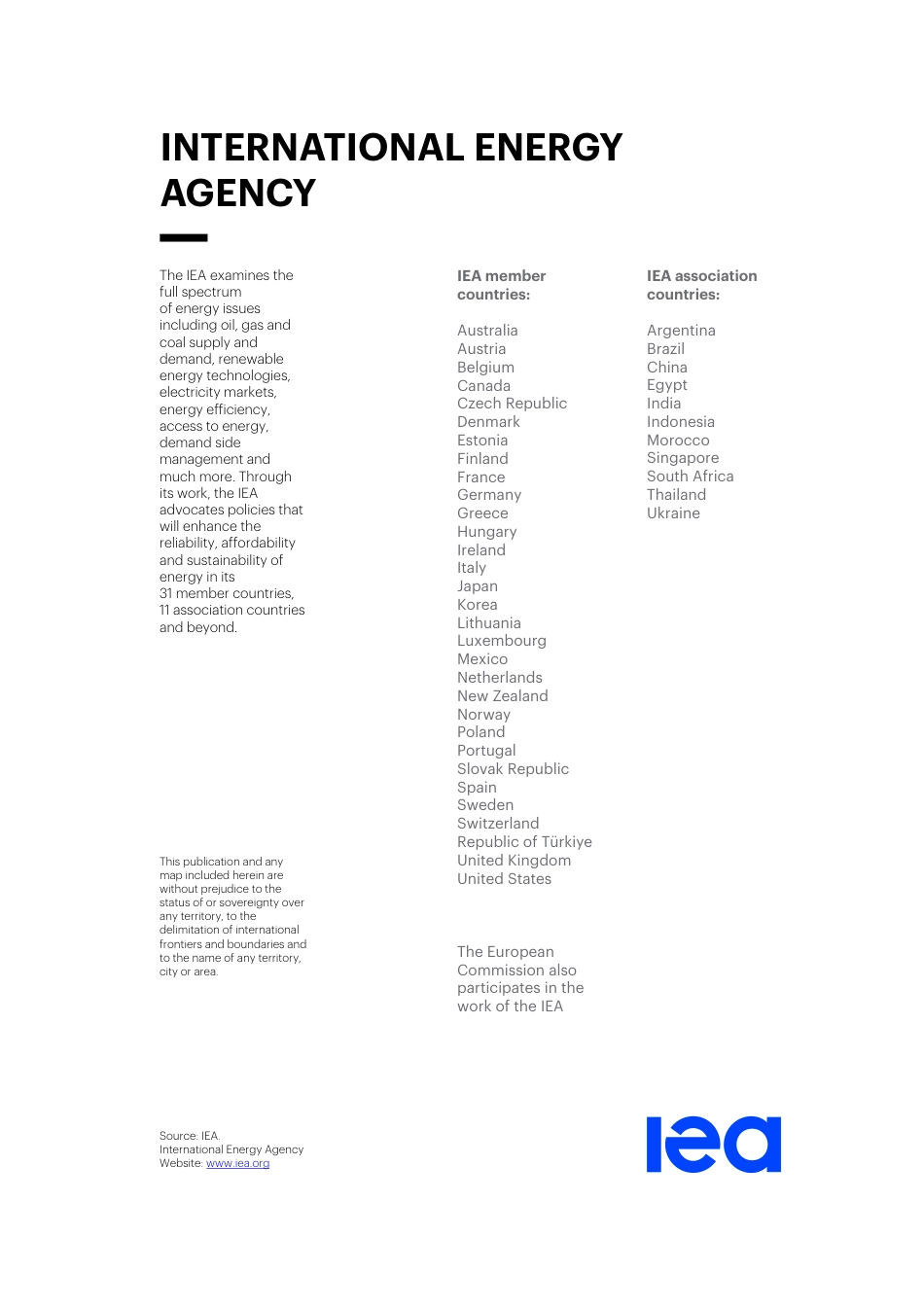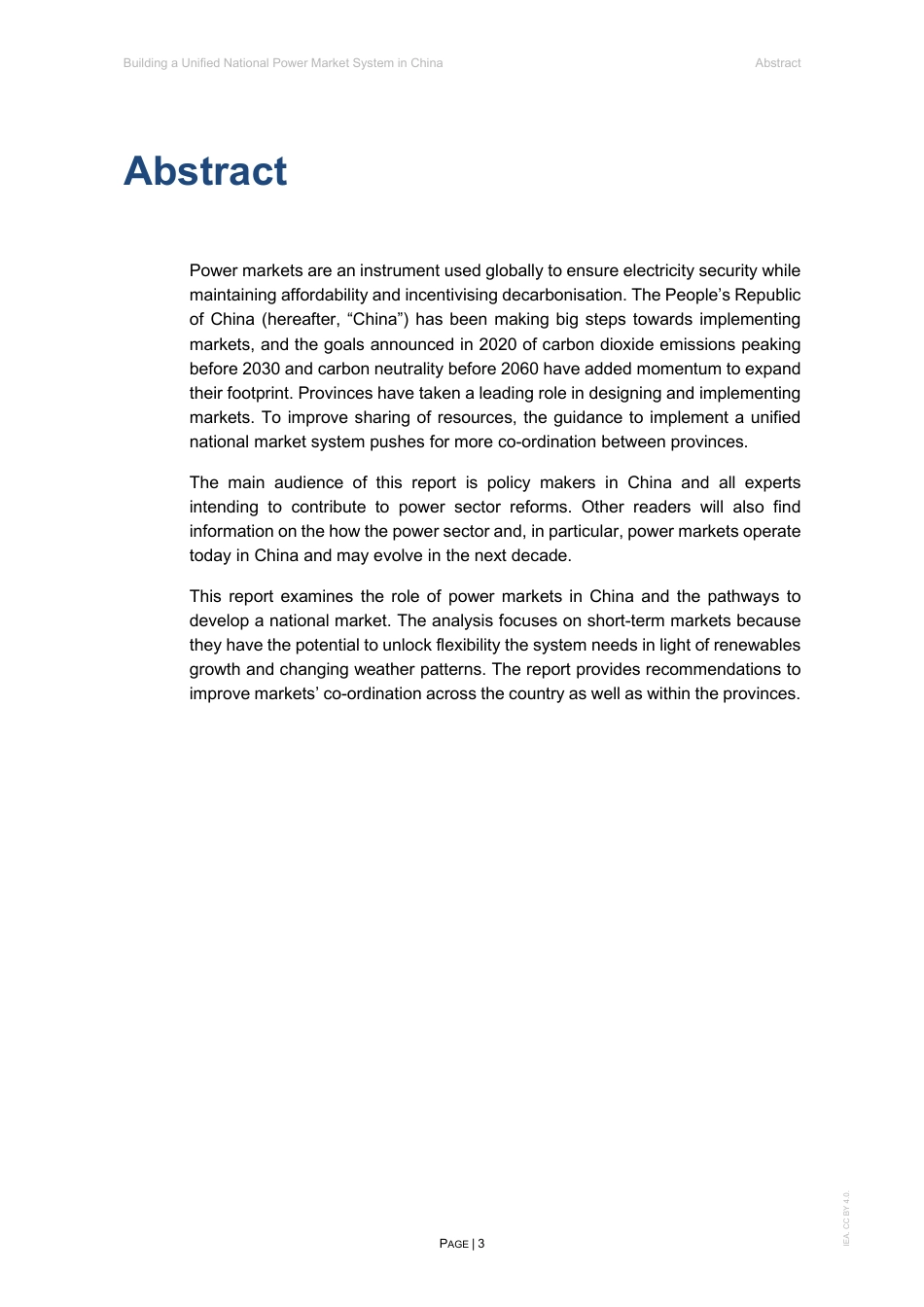Building a Unified National Power Market System in ChinaPathways for spot power marketsThe IEA examines the full spectrum of energy issues including oil, gas and coal supply and demand, renewable energy technologies, electricity markets, energy efficiency, access to energy, demand side management and much more. Through its work, the IEA advocates policies that will enhance the reliability, affordability and sustainability of energy in its 31 member countries, 11 association countries and beyond.This publication and any map included herein are without prejudice to the status of or sovereignty over any territory, to the delimitation of international frontiers and boundaries and to the name of any territory, city or area.Source: IEA. International Energy Agency Website: www.iea.orgIEA member countries: AustraliaAustriaBelgiumCanadaCzech RepublicDenmarkEstoniaFinlandFranceGermanyGreeceHungaryIrelandItalyJapanKoreaLithuaniaLuxembourgMexicoNetherlandsNew ZealandNorwayPolandPortugalSlovak RepublicSpainSwedenSwitzerlandRepublic of TürkiyeUnited KingdomUnited StatesThe European Commission also participates in the work of the IEAIEA association countries:ArgentinaBrazilChinaEgyptIndiaIndonesiaMoroccoSingaporeSouth AfricaThailandUkraineINTERNATIONAL ENERGYAGENCYBuilding a Unified National Power Market System in China Abstract PAGE | 3 IEA. CC BY 4.0. Abstract Power markets are an instrument used globally to ensure electricity security while maintaining affordability and incentivising decarbonisation. The People’s Republic of China (hereafter, “China”) has been making big steps towards implementing markets, and the goals announced in 2020 of carbon dioxide emissions peaking before 2030 and carbon neutrality before 2060 have added momentum to expand their footprint...



